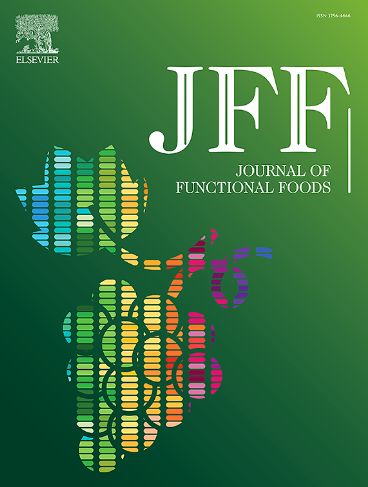Therapeutic potential of lipids of Irish marine cyanobacteria Chlorogloea microcystoides SABC 022904 and Phormidium africanum SABC 022001
IF 4
2区 农林科学
Q2 FOOD SCIENCE & TECHNOLOGY
引用次数: 0
Abstract
Parkinson's disease (PD) is a progressive neurodegenerative disorder linked to dopaminergic neuron loss and chronic neuroinflammation. This study investigated the neuroprotective and anti-inflammatory effects of lipids from Irish marine cyanobacteria, Chlorogloea microcystoides and Phormidium africanum. These lipids contain fatty acids including oleic, linoleic, and linolenic acids. Under PD-mimicking conditions (induced by oxidative stress in neuroblastoma cells), lipids from C. microcystoides significantly reduced cell death and oxidative damage at 10–30 μg/mL. Anti-inflammatory activities were assessed using RAW 264.7 macrophages stimulated with lipopolysaccharide, showing that both cyanobacterial lipids reduced nitric oxide production and altered cytokine levels. Importantly, C. microcystoides lipids decreased IL-6 and increased anti-inflammatory IL-10. These results suggest particularly that the lipids of C. microcystoides hold promise as a therapeutic additive in foods to mitigate oxidative stress and neuroinflammation in PD due to their neuroprotective and anti-inflammatory properties.

爱尔兰海洋蓝藻绿舌藻微囊藻SABC 022904和非洲磷藻SABC 022001脂质的治疗潜力
帕金森病(PD)是一种进行性神经退行性疾病,与多巴胺能神经元丧失和慢性神经炎症有关。本研究研究了爱尔兰海洋蓝藻、小囊藻绿舌藻和非洲磷藻脂质的神经保护和抗炎作用。这些脂质含有脂肪酸,包括油酸、亚油酸和亚麻酸。在pd模拟条件下(由神经母细胞瘤细胞氧化应激诱导),10-30 μg/mL的微囊状脂质显著降低细胞死亡和氧化损伤。使用脂多糖刺激的RAW 264.7巨噬细胞来评估抗炎活性,表明蓝藻脂质都减少了一氧化氮的产生并改变了细胞因子水平。重要的是,微囊状体脂质降低IL-6,增加抗炎IL-10。这些结果特别表明,由于其神经保护和抗炎特性,微囊泡内酯的脂质有望作为食品中的治疗性添加剂,减轻PD患者的氧化应激和神经炎症。
本文章由计算机程序翻译,如有差异,请以英文原文为准。
求助全文
约1分钟内获得全文
求助全文
来源期刊

Journal of Functional Foods
FOOD SCIENCE & TECHNOLOGY-
CiteScore
9.60
自引率
1.80%
发文量
428
审稿时长
76 days
期刊介绍:
Journal of Functional Foods continues with the same aims and scope, editorial team, submission system and rigorous peer review. We give authors the possibility to publish their top-quality papers in a well-established leading journal in the food and nutrition fields. The Journal will keep its rigorous criteria to screen high impact research addressing relevant scientific topics and performed by sound methodologies.
The Journal of Functional Foods aims to bring together the results of fundamental and applied research into healthy foods and biologically active food ingredients.
The Journal is centered in the specific area at the boundaries among food technology, nutrition and health welcoming papers having a good interdisciplinary approach. The Journal will cover the fields of plant bioactives; dietary fibre, probiotics; functional lipids; bioactive peptides; vitamins, minerals and botanicals and other dietary supplements. Nutritional and technological aspects related to the development of functional foods and beverages are of core interest to the journal. Experimental works dealing with food digestion, bioavailability of food bioactives and on the mechanisms by which foods and their components are able to modulate physiological parameters connected with disease prevention are of particular interest as well as those dealing with personalized nutrition and nutritional needs in pathological subjects.
 求助内容:
求助内容: 应助结果提醒方式:
应助结果提醒方式:


